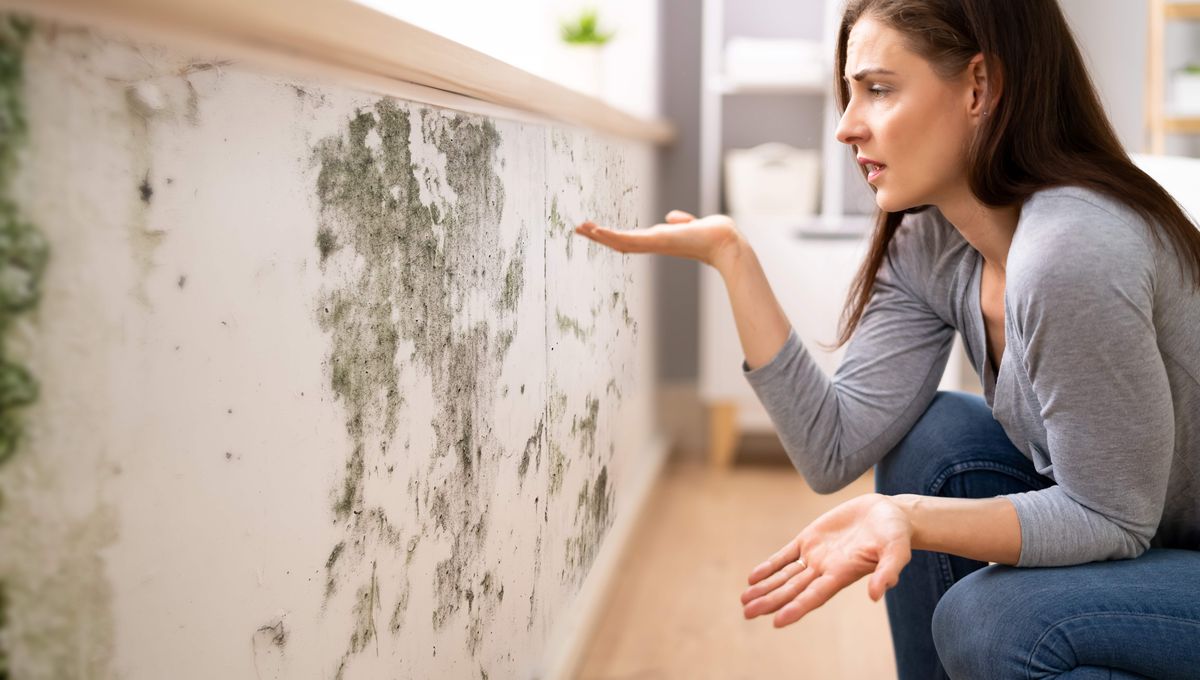
We’re all used to having to combat the various molds that appear in our homes during the winter months. At the time when our windows are closed and we’re trying to keep the house warm, we may find out homes have been invaded by some sporific little bugger. But summer can also see the proliferation of molds around our homes, especially mildew, which grows on outdoor surfaces – window ledges, doors, paving slabs, garden furniture – as well as sometimes indoors.
It’s annoying to remove, especially when it’s indoors, and especially so if you’re not sure whether it is mildew or another type of mold. So, how do you fight back against the tiny menace?
How does mildew differ from other molds?
Regardless of whether it is the summer or the winter, it’s important to know what you’re dealing with as removing mildew is different from combating other molds.
Mildew thrives in moist, damp spaces and is characterized by its thin layers of powdery growth that can be white, green, yellow, grey, or black. This is one of the easiest ways to identify whether you’re dealing with mildew or something else, as other molds tend to form raised masses that can be of various colors (usually black) and are fuzzy and/or slimy.
These two different fungi also have distinct smells. Mildew tends to smell milder and musty whereas mold is more pungent. Mold has a more powerful pong because, as it grows, it creates microbial volatile organic compounds (MVOCs), which vary depending on what type of mold is involved. Of course, we would not recommend sniffing anything growing in your home.
The two types of fungi also grow in different ways, which has significance for how we deal with them. Mildew is actually quite easy to deal with when compared to other invasive molds. This is because they grow across the surfaces of things like wood, plaster, or leather, whereas other molds tend to grow into whatever it is on. This can cause more long-term damage and makes them difficult to remove.
Finally, while both mildew and molds pose health risks for people living with them; molds, especially Stachybotrys chartarum, the dreaded household black mold, are far more serious. Mildew can cause respiratory issues, as well as sore throats and headaches, while molds can lead to various neurological issues that are far more severe.
That’s why it is important to not only know what you’re dealing with, but to remove it as soon as you can.
Thankfully, they are less of an issue during the summer, but that is not always the case as warmer conditions are apt to spread fungal spores into our homes just as much (if not more so) as they are in the winter.
Removing the buggers
Once you know you’re definitely dealing with mildew, you can start to combat it. Firstly, decide on what you want to use to remove it – store-bought or home-brewed cleaners. There are various ways to make home-brewed fungi clearer, but store-bought versions tend to be better. Some contain Microban, an additive that slows fungal formation. Some cleaners can be mixed with your pressure washers if you have them.
If you can’t find any store-bought options, you can homebrew your own fungi killers like some modern-day bleach witch. There’s a useful formula on the Clorox website that recommends mixing around one-third of a cup of bleach in a 5-gallon (around 19 liters, roughly) bucket of water. The concentration of bleach can be adjusted depending on the amount of mildew you’re cleaning.
You are also advised to clean the surrounding area before you start in on the heavy-duty fungus-killing activities, as mildew will likely be accompanied by other forms of dirt and molds. Wash the area thoroughly from the bottom up and rinse it all slowly from top to bottom – do so gently, so you don’t damage the surface you’re working on.
You may also want to shield any plants or grass growing around the area, as the bleach or antifungal chemicals can be hazardous to them – this is especially true if you’re using a pressure washer.
Avoid contact with your own skin as much as possible. It may be an idea to wear gloves and even eye protection.
Removing indoor molds
If your home has been invaded by mold, you can apply a similar process.
Firstly, wash the area with bleach to remove the surface stain and leave it to dry. Remember, molds grow into a surface, so just washing it won’t remove the fungus entirely – just the visible fruiting parts.
Next, if possible, apply an anti-fungal wash to the surface, something known as a biocidal treatment.
Finally, it is advised to paint over the infected surface with mold-resistant paint, which can be achieved by mixing anti-mold chemicals with whatever paint you choose.
All “explainer” articles are confirmed by fact checkers to be correct at time of publishing. Text, images, and links may be edited, removed, or added to at a later date to keep information current.
Source Link: People Are Discussing The Best Ways to Remove Summer Mildew